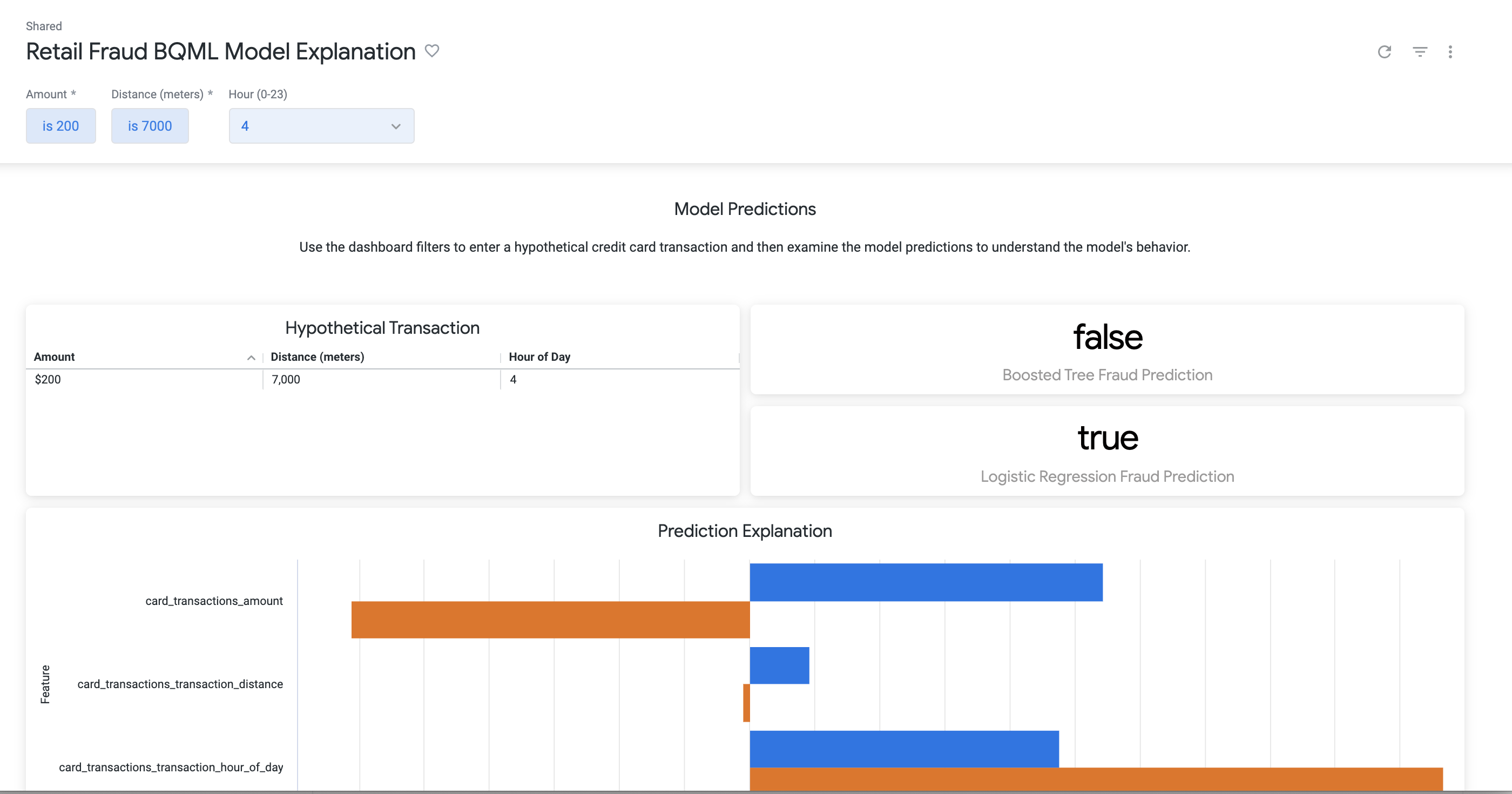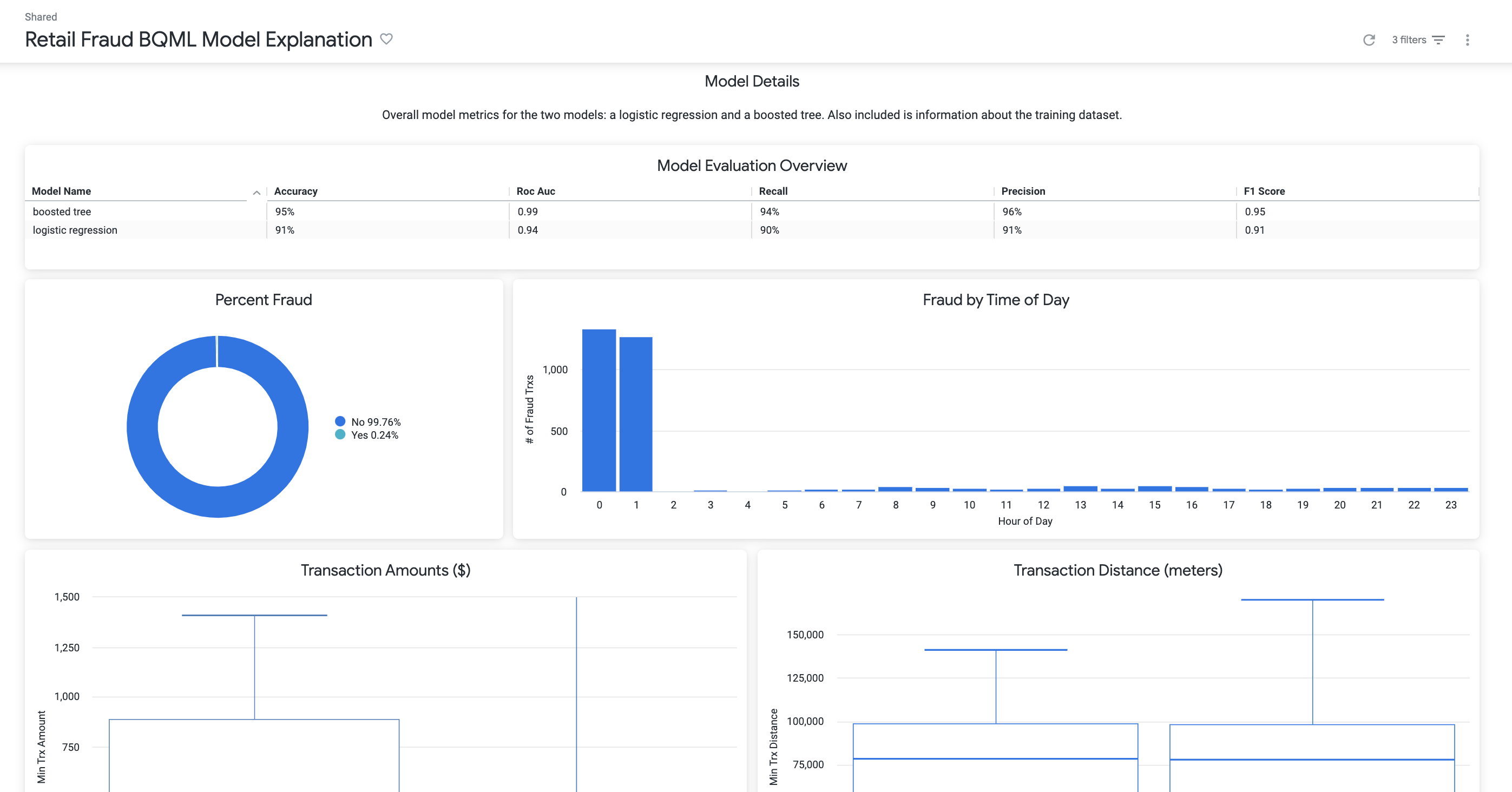This project demonstrates a "what-if" scenario tool for explaining model predictions.
Data
The data comes from a fictional retail banking dataset that includes a set of credit card transactions labelled with a fraud indicator. For details see: go/bq-compete-demo
Model
Two models are built off the same training data that predict whether a credit card transaction is fraudalent based on:
- Distance from the credit card holder's address
- Amount
- Hour of the day
Both models are fit with BQML default arguments with a slight modification toa ccount for the significant class inbalance.
CREATE OR REPLACE MODEL retail_banking.fraud_prediction OPTIONS(model_type='logistic_reg', labels=['is_fraud']) AS SELECT * EXCEPT(trans_id) FROM retail_banking.training_data WHERE (is_fraud IS TRUE) OR (is_fraud IS NOT TRUE AND rand() <= (SELECT COUNTIF(is_fraud)/COUNT(*) FROM retail_banking.training_data));
CREATE OR REPLACE MODEL retail_banking.fraud_prediction_bt OPTIONS(model_type='BOOSTED_TREE_CLASSIFIER', labels=['is_fraud']) AS SELECT * EXCEPT(trans_id) FROM retail_banking.training_data WHERE (is_fraud IS TRUE) OR (is_fraud IS NOT TRUE AND rand() <= (SELECT COUNTIF(is_fraud)/COUNT(*) FROM retail_banking.training_data));
Key Patterns
The dashboard allows users to supply values for the three predictors to create a hypothetical transaction, and then pass those parameters to ML.EXPLAIN_PREDICT in order to evaluate the model predictions and determine feature attribution.

